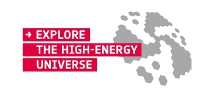Research – discover the central region of our Galaxy
 |
Take up the challenge – research the galactic centre
In this project you will research sources of energetic gamma rays that have been observed by INTEGRAL towards the centre of our Galaxy. You will examine the gamma-ray sources in the images that are provided, hunting for clues that will help you to discover what these objects are. For each source you choose to investigate you will create spectra to unveil how the energy they emit varies and how this changes over time.
For a brief introduction to the steps you need to take to successfully complete this project, see Further information.
A number of images are provided for you to investigate; all the images are of the same region of the sky. For the images and an explanation of the various files provided, as well as recommended software to use, see Further information.
Record your project – make a poster
To enter the competition you are required to present your work as a scientific poster. Your poster should be no larger than A0 in size (or equal to 8 x A4 pages) and in electronic form. In the poster you should detail the work that you have done and what you have found out (for examples of scientific posters, see this image). For instructions on submitting your poster for the competition, see Submit entry.
Judging the project
The poster will be evaluated by a panel of competition judges that includes scientists and engineers who are working on the INTEGRAL mission. It is important that the poster fully conveys the hard work you have done for your project. The judges will be looking at the following:
- The description of how you completed the project. This should be in the form of a typical science report: aims, procedure/methods, results, discussion and conclusions.
- The research you have done to aid your identification of the sources.
- The quality and detail of your description of the project.
- The clarity of the information presented in the poster
- Discussions of the meaning of the results and conclusions drawn.
Hints and tips
- Don’t forget to clearly label/identify which sources you have investigated.
- Don’t forget to present all the evidence you found that led you to your decision about what type of sources can be found in the images.
- You should consider errors on your measured values (older students may consider possible sources of error in the actual image data, see Extension on the Further Information page.
- When writing up your project, remember that it is to be presented as a poster and therefore the judges must be able to see all the information clearly.
- Entries will be accepted from individual students only
- Posters must be written in English.
- Posters should be A0 in size (or equal to 8 x A4 pages).
Check these pages regularly throughout the duration of the competition for any updates and further information.
Contact us
If you have any questions about the competition or would like to be notified of any updates, contact Rebecca Barnes at SciEdu esa.int
esa.int
